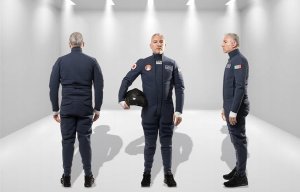
Italian-made for Mars
This competition is based on the ongoing Spacetex research project about interaction between the human body, clothing and climate in zero gravity.

10th October 2014
Innovation in Textiles
|
Boennigheim
Students taking part in the Spacetex 2030 competition will be trying to combine creativity, design, and practicality, when dealing with special functions that astronauts' clothing has to fulfil for long-term missions.
The students taking part in the competition have been asked to design highly functional clothing as station wear for astronauts using high-tech materials. These garments are the everyday outfits the astronauts will have on when in the spacecraft and Mars station.
This competition is based on the ongoing Spacetex research project, a joint undertaking involving the Hohenstein Institute, Schoeller Textil AG, the Charité hospital, and the German Aerospace Center.
The aim of the project is to acquire data about interaction between the human body, clothing and climate in a zero gravity environment. This data will then be used to optimise textile materials as regards the special requirements of weightlessness – but also extreme climatic conditions on Earth.
Unlike the spacesuits that are worn during take-off, landing and working outside, station wear does not have to offer any special protection, but first and foremost satisfy functional requirements.

Where cut and manufacture are concerned, it is necessary to take account of the special demands of the astronauts, who will be spending months experiencing weightlessness during the flight or low gravity when on Mars.
The various activities undertaken by the astronauts such as their daily exercise programme or routine maintenance also have to be considered by the students taking part in the competition. And then there are the restrictions resulting from the lack of resources and gravity regarding the cleaning and care of clothing.

All these aspects will be taken into account by the specialist panel headed by project director Dr. Jan Beringer when judging the submissions. Ten finalists will be shortlisted by the end of the year, with the prizes for their work being awarded at Techtextil 2015 in Frankfurt. Total prize money of EUR 3,000 is on offer.

Business intelligence for the fibre, textiles and apparel industries: technologies, innovations, markets, investments, trade policy, sourcing, strategy...
Find out more